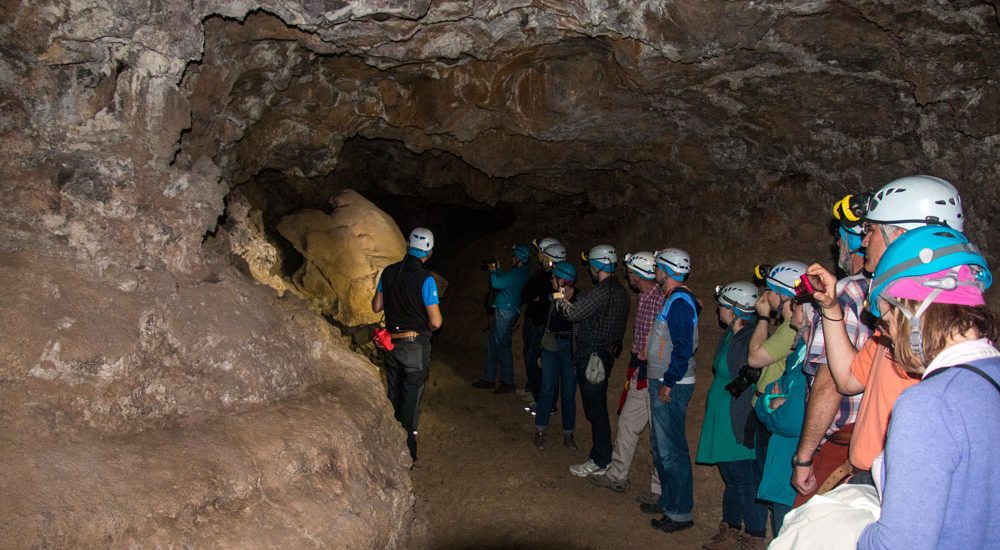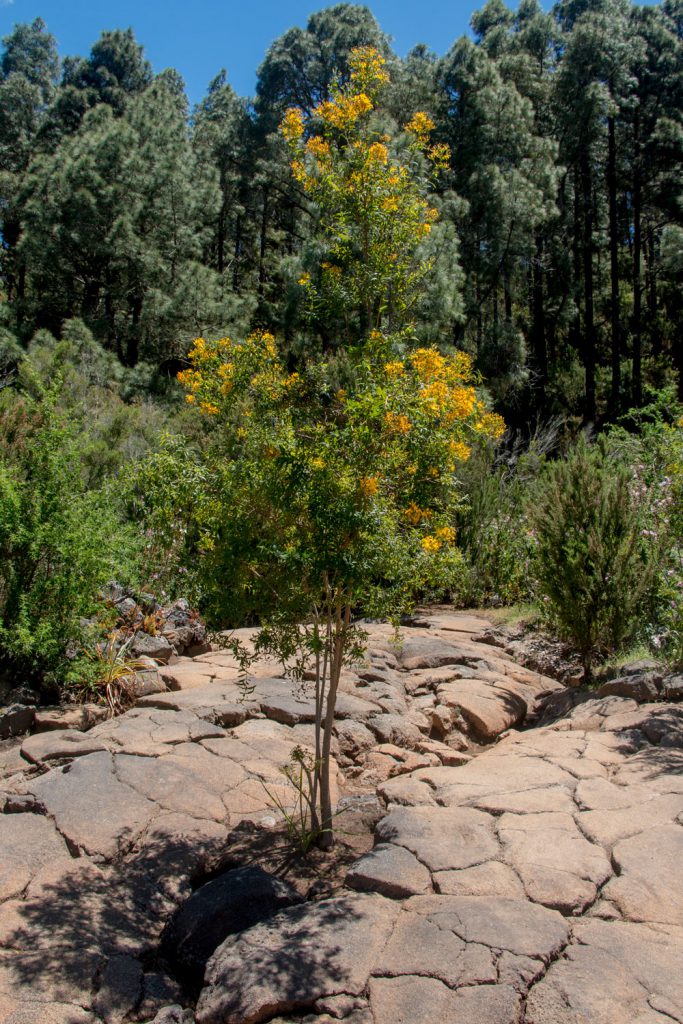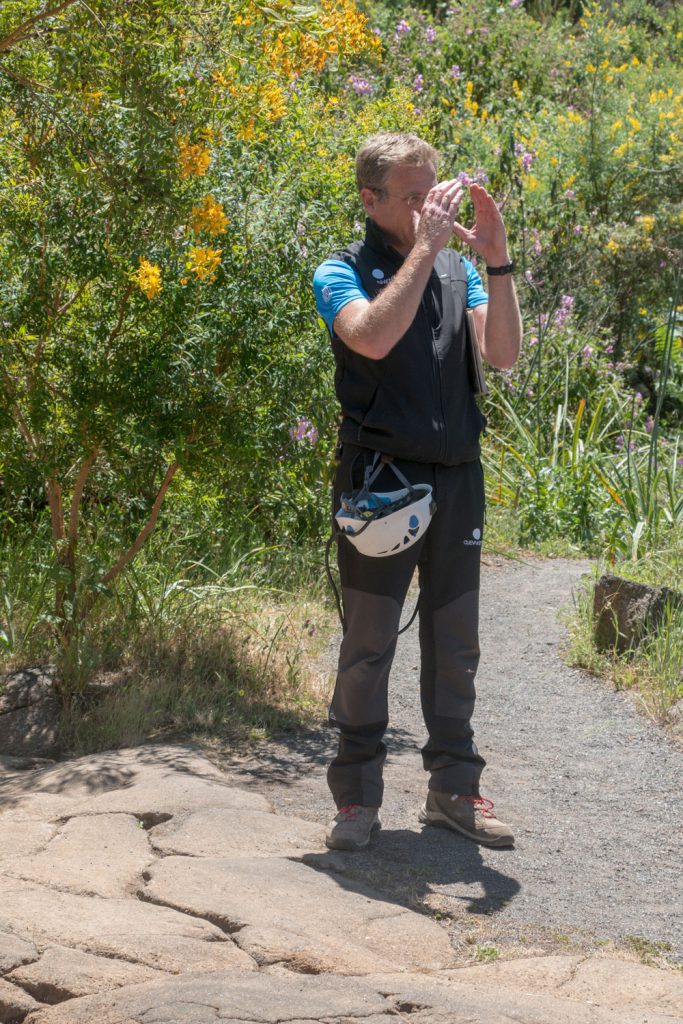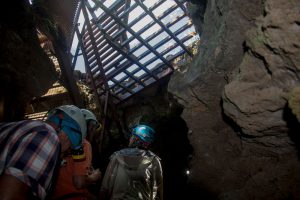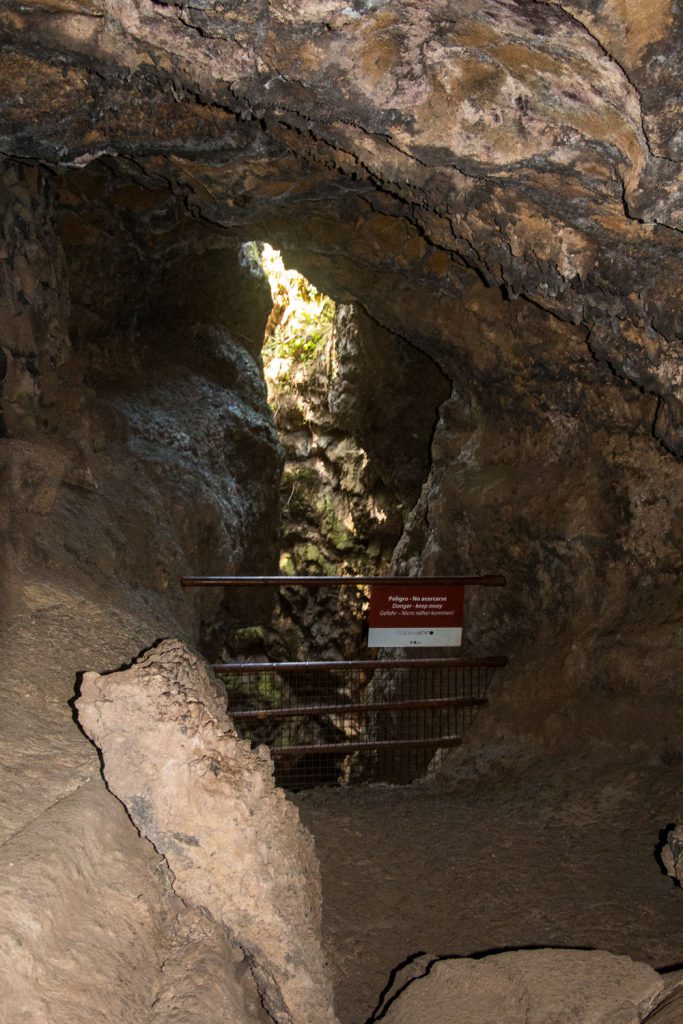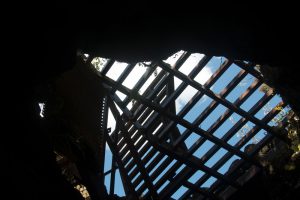Cueva del Viento – today we do not go hiking, but underground into the largest volcanic tube in Europe. On Seven Islands it is not only about hiking tours, but also about sights worth seeing around the Canary Islands. The Cueva del Viento is a sight for nature and cave lovers. It can be found at Icod de los Vinos on the northern island side of Tenerife,
- Cueva del Viento – an unadorned tourist attraction
- Cueva del Viento – Approach
- Cueva del Viento – Information
- Cueva del Viento – a long history
- What can you see in the volcano tube?
- A short hike on the Camino Real
- Cueva del Viento – down into the volcano tube
- Tunnel view on three floors
- Stories about thin layers of earth
- Darkness in the Cueva del Viento
- The future of the Cueva del Viento
- And finally
Cueva del Viento – an unadorned tourist attraction

“What’s so special about Cueva del Viento?” you might ask. There are a few things to enumerate. The Cueva del Viento is the longest and largest volcanic tube in Europe and the fifth largest in the world.
What is special about the Cueva del Viento is that its network of tubes. And this spreads out on three volcanic tubes one above the other, a three-storey natural wonder so to speak. This makes the cave unique all over the world. Of the 18 kilometres uncovered so far, 180 metres are accessible to visitors. The rest is reserved for scientists only. But also the part that can be visited is as good as possible, of course left as it is. There is no light and no flashing entrance signs and certainly no ticket booth.
Summary information about the article and a large selection of GPS hiking tracks are availableRegister now for my newsletter and get exclusive access to my collected GPS tracks as well as all short information about my articles.
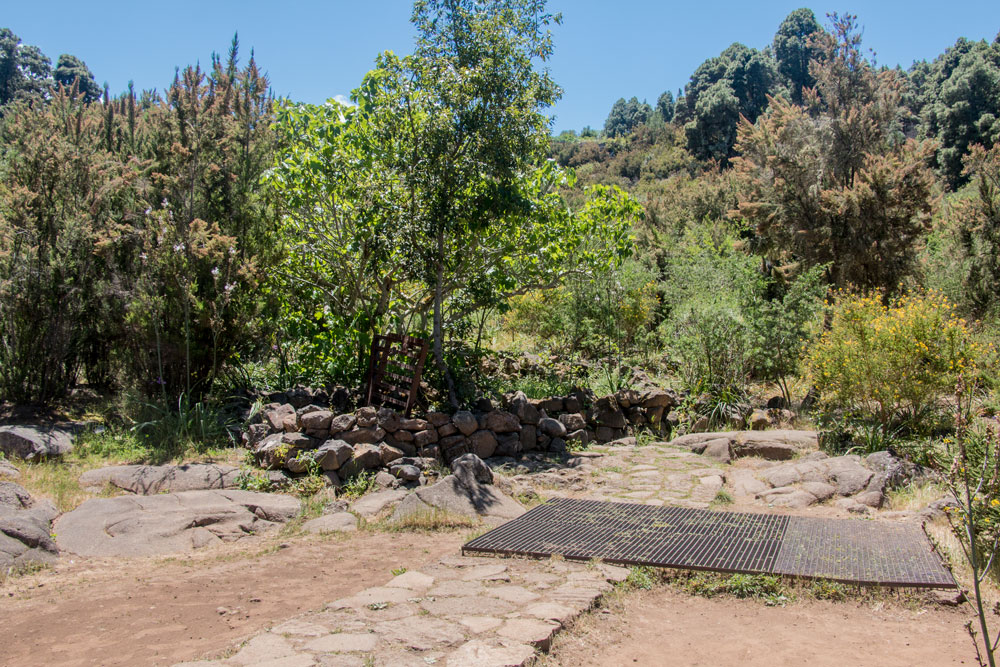
The entrance to the cave is a few kilometres from the visitor centre. Visitors can get there in small groups by bus or on foot. The guided tours themselves are conducted by experienced speleologists. These guide small groups through the lava tubes and inform very competently about all questions around the Cueva. I myself am so enthusiastic about the Cueva del Viento that I have already been there several times. And I would like to go there again and again with visitors. The hike to the cave and the guided tour through the Cueva del Viento take two hours. But even if this is not a long and exhausting hike. The excursion under the earth into the volcano tube remains a unique and unforgettable experience.
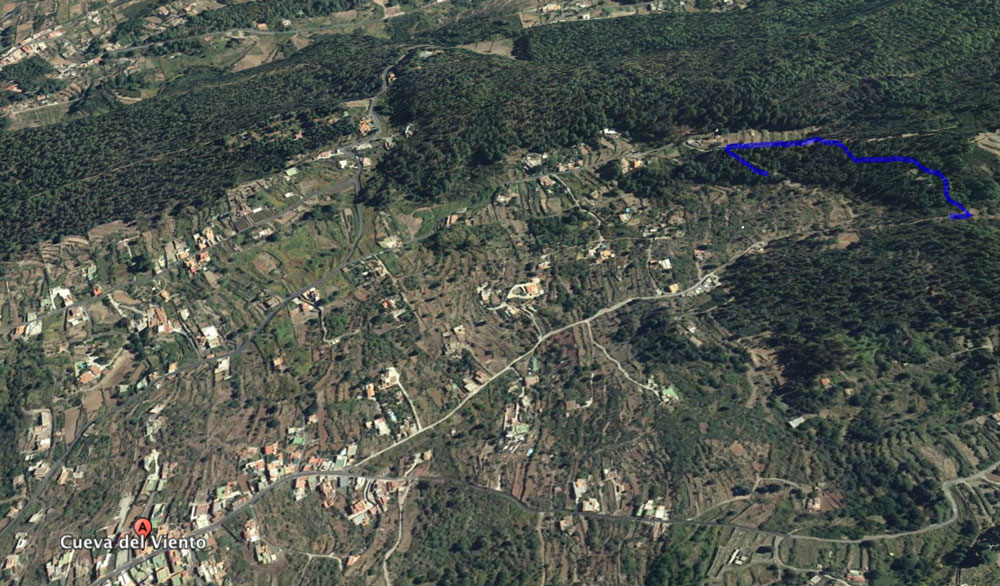
Cueva del Viento – Approach
Address: Visitor Centre: Calle de Los Piquetes 51, 38430 Icod de los Vinos, Tel.: 922815339
How to get to Icod de Los Vinos by bus
In principle, you can take the bus (Titsa bus lines 105, 106, 107, 108, 325, 360, 363) to Icod de Los Vinos. But starting point for the visit of the Cueva del Viento is the district Viento. That is located above Icod de los Vinos. If you travel by bus to Icod de los Vinos, you have to accept a long walk of several kilometres or a taxi ride.
Arrival by car
From the north you can reach Icod de los Vinos on the island roads TF-5 and TF-342. And from the west on the TF-82 and TF-366. Those who do not drive with navigation will find a perfect signposting from Icod de los Vinos. The signs to Cueva del Viento are easy to find from the centre of Icod de los Vinos. Sufficient parking spaces are available right underneath the visitor centre.
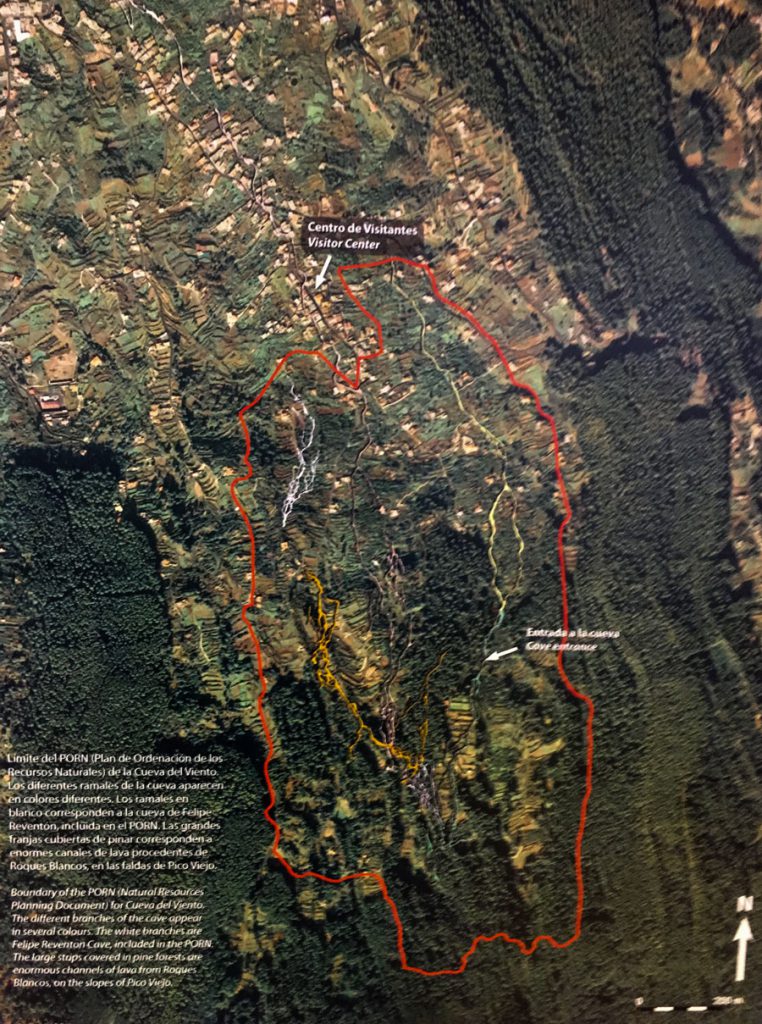
Cueva del Viento – Information
Opening hours and prices
Monday, Wednesday, Thursday and Friday from 9.00 to 19.00,
Tuesday, Saturday and Sunday from 9.00 to 16.30 o’clock
Prices: Adults 20 € (residents 10 €), children (participation allowed from 5 years) 8,50 €
Guided tours
The guided tours, which last two hours, take place several times a day in different languages. You may need to find out the date for a guided tour in German or look around the website. The Cueva del Viento is often fully booked well in advance. Therefore, if you only want to spend a short time in Tenerife, it is a good idea to book well in advance. The expert guides (CVs on the homepage) go into the cave with small groups (maximum 16 people).
Important Reservation
Booking is only possible in advance and tickets must also be purchased and paid for online in advance. It is not possible to go to the Visitor Centre to buy tickets or book a tour.
Clothing
As the temperature in the Cueva del Viento is around 10-12 degrees, warm clothes and sturdy shoes are mandatory. The soils of the volcano tube are largely natural, so that there are many small stones. In order to walk well over these soils, thicker shoe soles (sports shoes) are really recommended. If the shoe soles are too thin, the pointed volcanic stones can be felt well. The Cueva del Viento provides helmets, headgear and lamps for visitors. Backpacks and bags are not allowed, but can be locked in the visitor centre.
Website: for booking and further information: www.cuevaldelviento.net and contact info@cuevadelviento.net. The website is also available in English.
Cueva del Viento – a long history

The Cueva del Viento originated from basalt lava 27,000 years ago. That was the time when the volcano Pico Viejo (old Teide) erupted for the first time. The cave has the name “cave of the wind” because of the strong air currents inside the volcano tube. It is the largest volcanic tube in Europe and the fifth largest in the world. So far, 18 kilometres have been explored. When I first visited the Cueva del Viento seven years ago, it was still 17 kilometres. But also the 18 kilometres are probably only a small part of the big cave complex. Already the natives of Tenerife, the Guanches, knew and used the Cueva del Viento. During the exploration of the cave more than 2000 years old bone remains of them were found. The Cueva del Viento was used by the Guanches as a burial place.

Actual exploration
The actual exploration of the cave began at the end of the 60s of the previous century. Gradually the topography of the cave became more and more accessible. Meanwhile biologists discovered the rich cave animal world. Since 1994, the Natural Science Museum of Tenerife, part of the island administration, has been preparing works. The aim was to make the cave accessible to visitors. The rock debris was carefully removed and large parts of the cave were uncovered. In order to protect the Cueva del Viento as a nature reserve, the Canary Islands government issued a plan in 1998. With this plan they want to conserve the natural resources of the Cueva del Viento. The plan was published in 2014.
Summary information about the article and a large selection of GPS hiking tracks are availableRegister now for my newsletter and get exclusive access to my collected GPS tracks as well as all short information about my articles.
What can you see in the volcano tube?
At first every visitor of the Cueva del Viento dives into absolute darkness and silence. In the cone of light of the headlamps it quickly becomes clear that there can be no plants here. Only roots that penetrate through the crevices hang from the ceiling. Of course there are lava stalactites, lava falls, lava terraces and lava lakes in the famous volcano tube. In the Cueva del Viento live 190 animal species, which are mostly invertebrate. In addition to these cave animals, the researchers have found various fossil remains of extinct vertebrates. That are e.g. giant lizard, giant rat. Apart from the Cueva del Viento, there are only three other lava tubes on the Canary Islands. Two are in Lanzarote and one is in La Palma under this special nature protection.
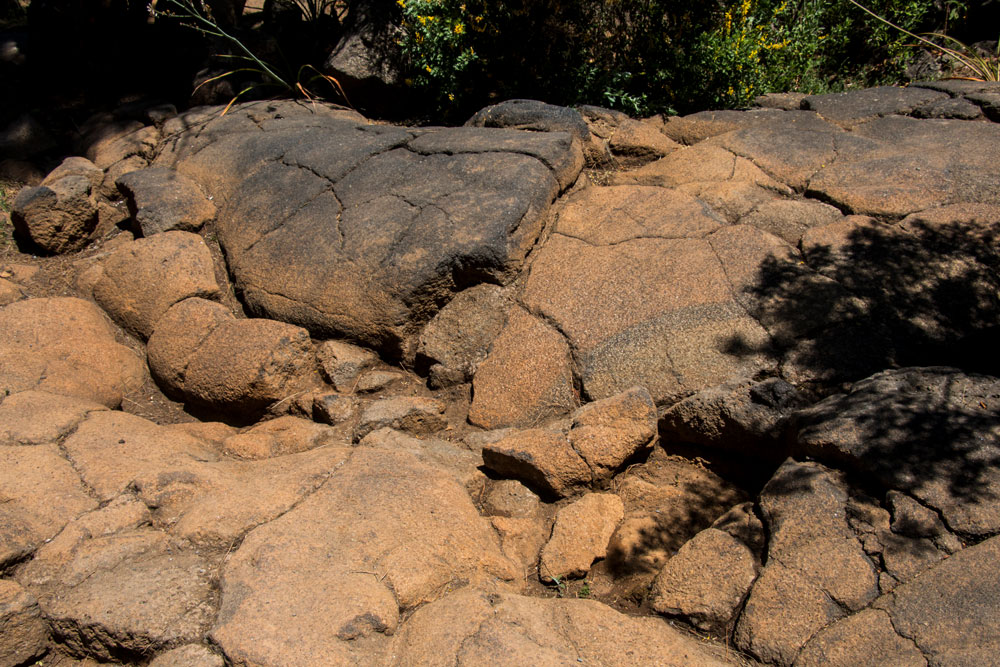
The tour begins at the Visitor Centre. There expert guides use display boards to give visitors an initial overview of the volcano tube. A lot of interesting theoretical information with the help of plastic descriptions gives the visitors first insights into the volcanic life on Tenerife. After all the questions have been answered, the group of maximum 16 people will be divided into two buses and driven to the starting point of the short hike. From there it is no further footpath to the cave entrance. The little adventure can begin.
A short hike on the Camino Real
From the car park, the group then takes a cave guide in the direction of the cave entrance. The cave guide explains once again what has already been shown in the visitor centre with the help of display boards. How could the huge lava tubes be created? What types of lava are there? And how can I know if there is a volcano tube below me when I walk through the landscape? Have you become curious? The competent guides seem to answer all the questions.
On the way to the entrance of the cave we pass small lava fields and a pine forest. A part of the way leads uphill over an old Camino Real (royal road). Centuries ago these were the trade routes. But also the normal routes on the island, which brought the inhabitants from one place to another. On large old stones the participants follow the cave guide up the Camino Real.
As the sun was burning from the sky during my last guided tour, some of the group actually started to sweat a little already on the mountain. “Time for the underworld”, the guide said. But before the entrance is reached, the guide passes a large grille embedded in the ground. From there a first view into the depth of the cave is possible. And shortly afterwards it is finally done. The group stands in front of the long awaited entrance. But before it finally goes into the darkness, the cave visitors are provided. They get protective cloths for the head, helmets and headlamps.

Cueva del Viento – down into the volcano tube
The entrance of the cave is protected from unauthorized visitors. On my first visit seven years ago, the guide had to lift a heavy iron grate to allow us to enter. Today it seems that a well secured castle is doing the same. But it does not give the impression that mass tourism prevails here. The whole enterprise seems more like an almost private small scientific expedition into an unknown cave. Even though only 180 metres from the huge volcano tube are open for viewing. These metres also appear to the visitor to be quite long in absolute darkness and silence. A staircase leads down to the Cueva del Viento.
At the bottom, there is no light and no paths. It belongs to the concept of the Cueva del Viento that the interior should be kept as natural as possible and shown to the visitor. In order to prevent the wear of the floor, in some places, visitors may only walk on the left or the right side of the Cueva del Viento. Not for the professional, but for the layman it can give the impression that he is the first visitor to the cave. Arrived at the bottom of the volcano tube, there is first a small break. An arrival in the depth. And then it goes behind the cave guide into the dark volcano tubes.
Tunnel view on three floors
The cave leader goes ahead and the group carefully follows. At the beginning of the tour we go down a long corridor into the Cueva del Viento. In the cone of the headlamps you can admire the lava formations, the roots growing into the cave and from time to time a small spider. From time to time the group stops to listen to the interesting and entertaining explanations of the guide. He points out branching lava tubes and also lets the visitors have a look into the so-called next floor of the cave. Only when you actually look at the cave does the special feature of the Cueva del Viento become really clear. The unique geomorphological features of the cave tubes are their arrangement on three levels, one above the other, due to individual eruptions.
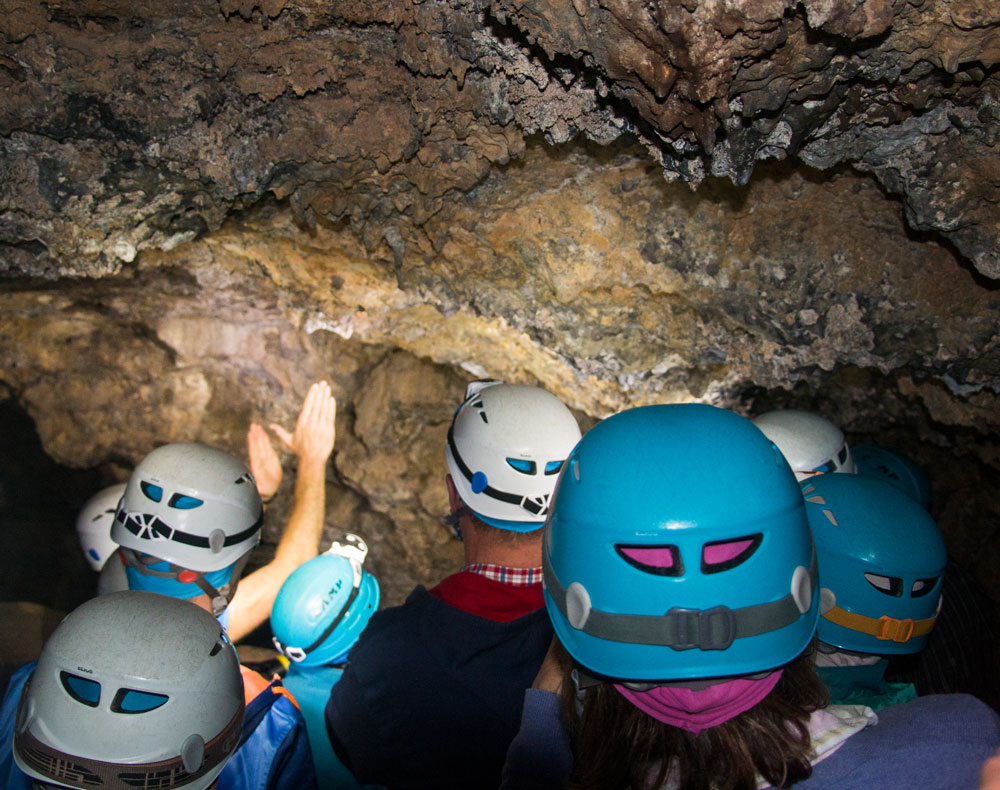
The third level is not open to visitors and, according to the cave guide, a fourth “floor” is assumed to be among the three levels now known. These lava tubes were created by basalt lava flows, which drive the accumulated heat inside the lava flow. When a complete crust is formed, the heat is retained and thermally separates the inner lava flow. The lava channels are formed underneath. Even after a volcanic eruption, the lava flows further through these channels. Thus they become empty or if the lava remains inside, terraced plains remain on the ground. In some places this looks as if nature would provide lateral benches.
Stories about thin layers of earth
The lava layers that led to the formation of the volcanic tubes are sometimes so thin that they cannot be entered without breaking in. It is good to be able to identify this lava rock as a wanderer and to be a little cautious in these places. When I was in the Cueva del Viento for the first time seven years ago, the guide of the time told us the following story: The cave Cueva del Viento had been discovered here, as there had been a burglary a long time ago.
At a place, which is today secured with iron bars and penetrates in the daylight by a rock crevice into the cave, an old woman broke in. She had been herding goats on the meadow when she suddenly fell 16 metres into the depth. She had survived the fall. The existing tunnels had been excavated from here. Today this place – also above – is particularly secured. When I asked the cave guide about this story during my last guided tour, he said that he knew nothing about it. Perhaps just one of the many stories about the Cueva del Viento?
At the beginning of the tour I had some difficulties walking on the quite pointed lava stones. But I got used to the special ground conditions as quickly as to the darkness surrounding me and the extremely low passages. The cave visitors take a seat in a side tube. Also there, the lava rock is protected with pads, so that visitors really only sit there or touch the lava at the places where it is especially protected.
Darkness in the Cueva del Viento
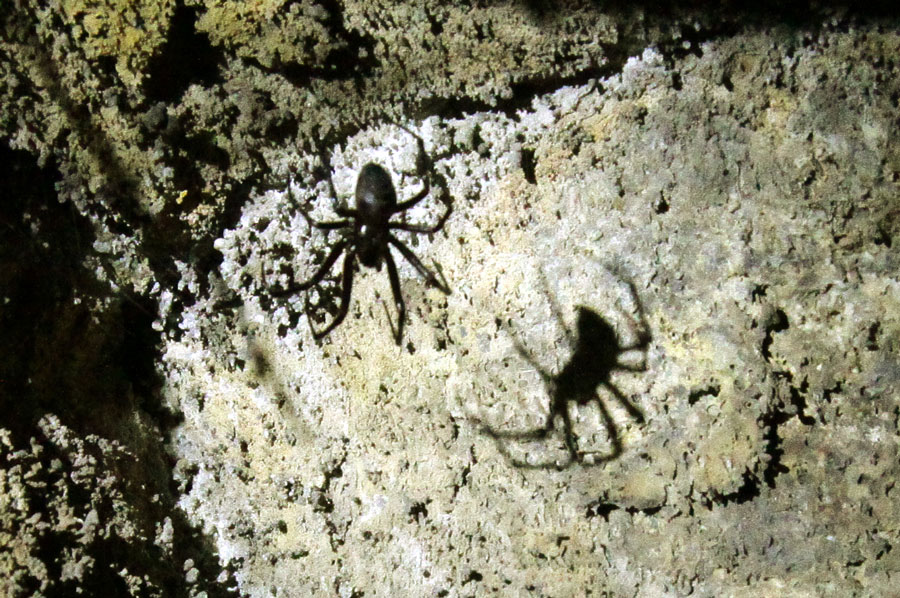
When you have reached the lowest point of the cave, you slowly return “uphill”. Most of the time the next group is already coming today in a different voice guidance. Compared to the last years there are more and more guided tours as more and more people enjoy the impressive volcano tube. And the entrance fees are of course also important income to continue research and possibly to make other areas of the volcano tube accessible to the public.
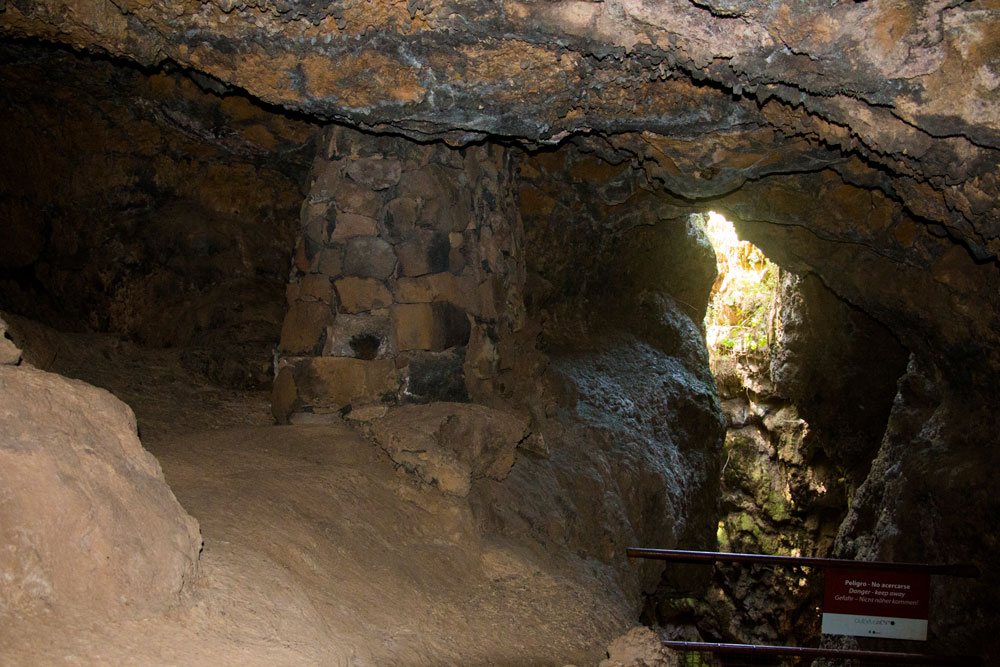
In order to experience the darkness again completely, the lamps are completely switched off for a short time with each visit. The own breath sounds loud and the own hand is not to be seen before the eyes. An experience of peace and absolute silence. Years ago a cave guide told us that we should now hold hands and feel our way out of the cave in the darkness. A little joke at the end of the tour. Of course everyone was allowed to leave the cave with light.
The future of the Cueva del Viento

The scientists and speleologists on Tenerife have clearly set themselves the goal of protecting the cave as well as possible and keeping it in its original state. For this reason, they do not want more visitors in the cave and seem to want to limit the number of visitors in the future. Already years ago, our former cave guide declared: “The protection of the cave from the surely also urgently needed income goes to us by the entrance fees”. But in the meantime it has become clear that more and more guided tours are taking place. Apparently there are also political efforts to develop the Cueva del Viento into a real tourist attraction. Then it will surely be over soon with peace, naturalness and darkness.
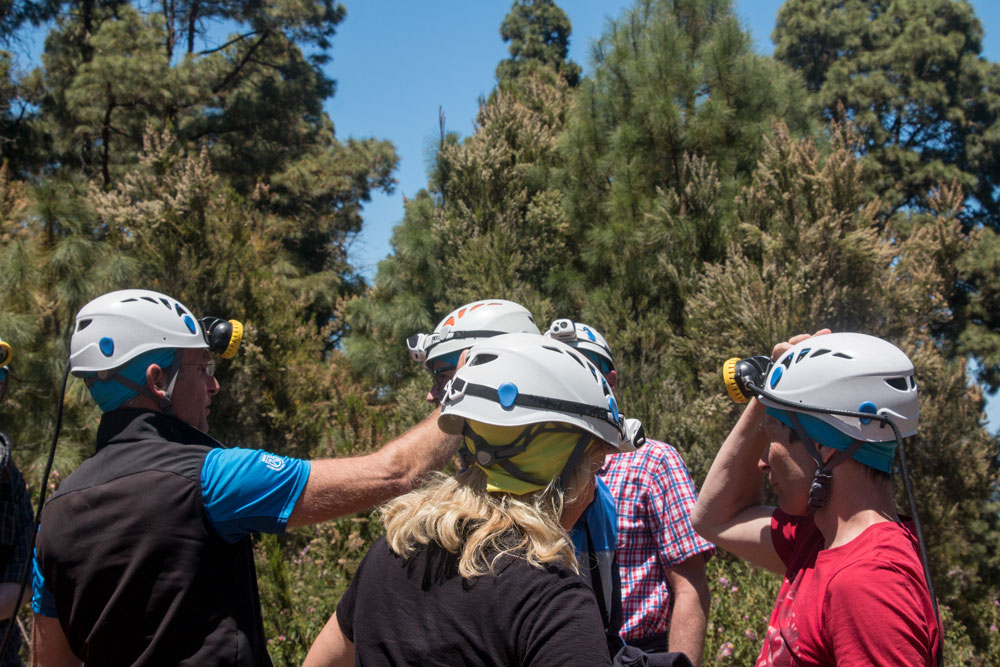
The researchers continue digging there and until today there is no end of the huge labyrinth corridors foreseeable. And the biologists will also come across some previously unknown cave animals in the future. At the end of the tour, visitors are offered a small round tour of the Cueva del Viento, including a visit to an old threshing floor and old farmsteads. A visit to a cave of a very special kind, which I can recommend to everyone. A deep insight into the volcanic side of Tenerife in a double sense. I wish you an exciting stay in the Cueva del Viento.
Summary information about the article and a large selection of GPS hiking tracks are availableRegister now for my newsletter and get exclusive access to my collected GPS tracks as well as all short information about my articles.
And finally
I wish you much pleasure in exploring this impressive cave,
Dagmar von SiebenInseln
